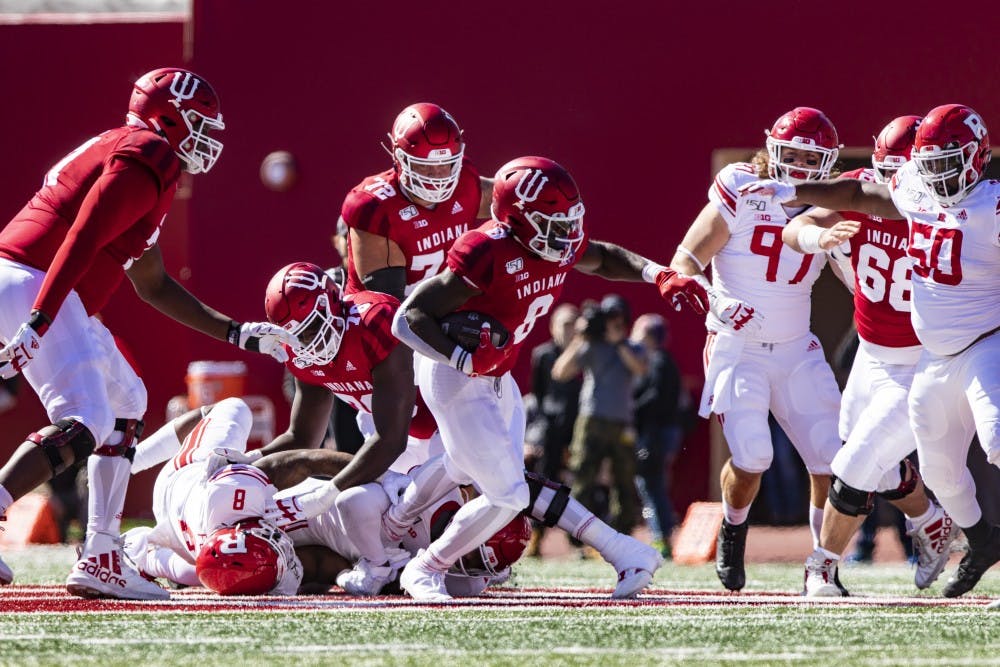For the first time since Nebraska joined the Big Ten, IU will travel to Lincoln, Nebraska, to play a football game this Saturday. It only took eight years, three months, three weeks and five days for the Huskers and Hoosiers to play a football game in Nebraska.
Only once in those previous 3,040 days did the two teams meet on any football field: a 27-22 heartbreaking loss for the Hoosiers in Bloomington in 2016.
The fact that the teams have only faced off twice since Nebraska joined the Big Ten in 2011 is a prime example of problems caused by conference divisions in the Big Ten.
Divisions in huge 12 to 14-team conferences were installed as a way to keep a sense of familiarity within teams that were geographically similar and keep a competitive balance. At first, it seemed like a good idea.
A team such as the University of Alabama would be able to play Auburn University every year, and the new money-grab fad of conference title games would be less likely to produce a rematch from the regular season.
Over time, this concept has caused more problems than solutions. As more teams joined major conferences, it’s caused longer gaps between meetings of teams in the other division and less competitive balance within conferences.
Every major conference has teams in the same league that never play each other. IU and Nebraska have already been mentioned, but this is not the only rare league matchup in the Big Ten. IU and Minnesota have both been in the Big Ten since 1899, yet have only faced each other twice this decade: 2013 and 2018.
While division imbalance also exists in the SEC, ACC and Pac 12, it’s the worst in the Big Ten. Since the league switched from the incredibly poorly named but balanced Leaders and Legends divisions to an East/West format after Maryland and Rutgers joined the league in 2014, the Big Ten has been hilariously lopsided.
Four of the top five programs in the Big Ten — both in terms of tradition and success on the field this decade — reside in the eastern division. That hurts everyone in the league. It obviously hurts a team like IU because they have to play Ohio State, Michigan, Michigan State and Penn State every season.
It hurts a team like Ohio State as well. The Buckeyes have to grind through the rest of the top-heavy division, which opens up more chances for losses and leads to a lesser chance of making the college football playoff.
A team like Wisconsin can have a 12-1 season in 2017 but still get left out of the CFP because nobody respects the pit of misery that is the Big Ten West.
Even when an unexpected team like Minnesota starts a season 7-0, there is little chance for the Golden Gophers to play in the semifinal because of their poor strength of schedule.
The Big Ten title game is also a complete joke. Since the Big Ten moved to the East/West format, the winner from the east division is 5-0 against their western counterparts in the conference championship clash.
The only way to fix the problem is to get rid of divisions. Keep the nine-game conference schedule, and give every team a protected rivalry game to play every season. This way, IU will always play Purdue, Ohio State will face Michigan and so on.
Michigan will be the only team that has a slightly different schedule, as they would need to have two protected rivalries with Ohio State and Michigan State. This is not unheard of. In the Big Ten’s current form, every team but IU and Purdue play three cross-division opponents every season. The Hoosiers and Boilermakers only play two so that they can play on an annual basis.
This leaves eight games to rotate for the other 12 league opponents. A player on a Big Ten team will play against every other Big Ten team by the time he has finished his sophomore year in college.
The Big Ten title game will pit the top two teams in the league against each other, like what the Big 12 does.
Is it a perfect solution? Probably not. But it’s much better than the current setup, where IU travels to Nebraska once every decade.



